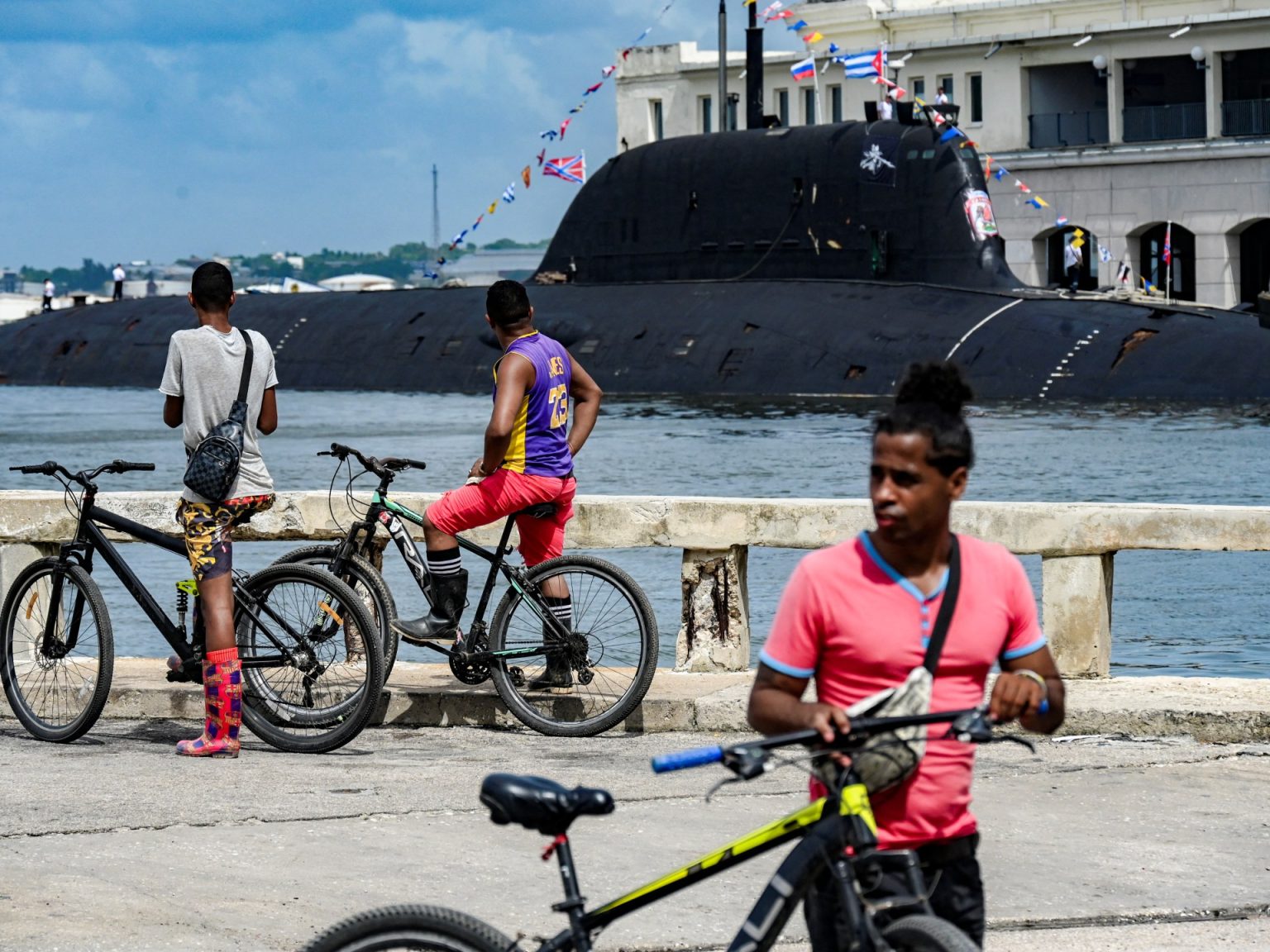In a recent display of naval strength, Russian warships arrived in Havana, Cuba’s main harbour, leading to dozens of residents gathering to witness the event. The Caribbean nation, located just 150 kilometres away from the US, has had tense relations with its neighbor for decades. While this is not the first time Russian navy ships have visited Cuba, this convoy appears to be the largest in several years, with the fleet expected to stay between June 12 and 17, allowing the public to take tours of the vessels.
The flotilla’s visit is described by Cuban officials as a “friendly” routine visit between the two countries’ navies, with the crew expected to conduct military training exercises during their time in the Caribbean. However, analysts view Moscow’s move as a calculated effort to flex naval muscle in the US’s backyard amidst escalating tensions between Russia and the US. Russian President Putin’s promises of retaliation against the US and other Western allies of Ukraine, who have removed restrictions on using weapons against Moscow, contribute to the larger context of global power dynamics at play.
The convoy consists of four vessels, including the lead ship Admiral Gorshkov, a modern frigate capable of long-range missile attacks and anti-submarine warfare. The fleet also includes a nuclear-powered submarine, an oil tanker, and a rescue tugboat as support vehicles. The US response to the deployment has been characterized by downplaying the situation, with officials stressing that such naval exercises are routine and monitored. The fleet stayed in international waters throughout its stay in Cuba, with US officials confirming the absence of nuclear weapons on board.
Russian and Cuban officials have offered statements regarding the fleet’s presence, with Russia’s Defence Ministry detailing drills conducted in the Atlantic en route to Cuba. The Cuban Foreign Ministry stressed that none of the warships were carrying nuclear weapons and that their presence did not represent a threat to the region. The historical ties between Russia and Cuba, dating back to the Cold War era, have seen the resurfacing of economic relations in recent years, with bilateral trade reaching $450 million in 2022, driven largely by sales of petroleum products and soy oil.
The deepening economic ties between Russia and Cuba suggest a strategic partnership driven by economic factors rather than ideology. This cooperation comes amidst Cuba’s worst economic crisis in decades, exacerbated by US sanctions and internal economic challenges. Russian investments and economic partnerships with Cuba aim to provide much-needed fuel and support to the Caribbean country. While historical events like the Cuban Missile Crisis of 1962 loom large, analysts suggest that this week’s naval show-off underscores the intensifying relationship between Russia and Cuba, focusing on economic cooperation rather than military confrontation.
Despite the historical context of tense relations between Cuba, Russia, and the US, current interactions between the countries seem to be more focused on economic cooperation and regional alliances. The deployment of Russian warships to Havana is seen as a display of naval strength and a reminder to the US of Moscow’s presence in the region. While the visit may evoke memories of past conflicts, experts argue that the current relationship between Cuba and Russia is driven by economic interests, with an emphasis on trade partnerships and mutual support in the face of ongoing geopolitical challenges.


